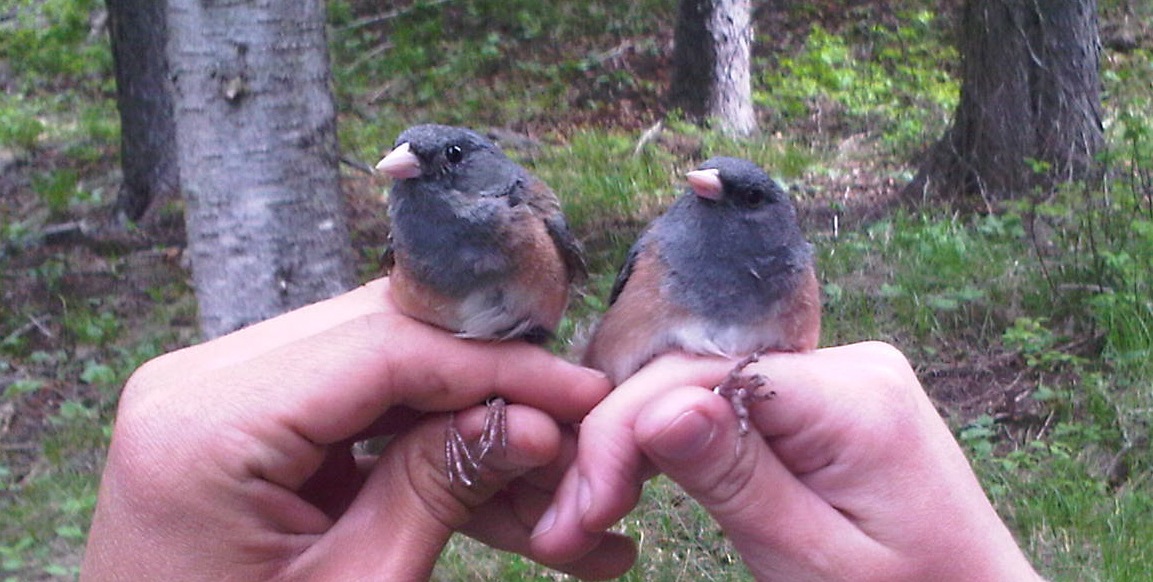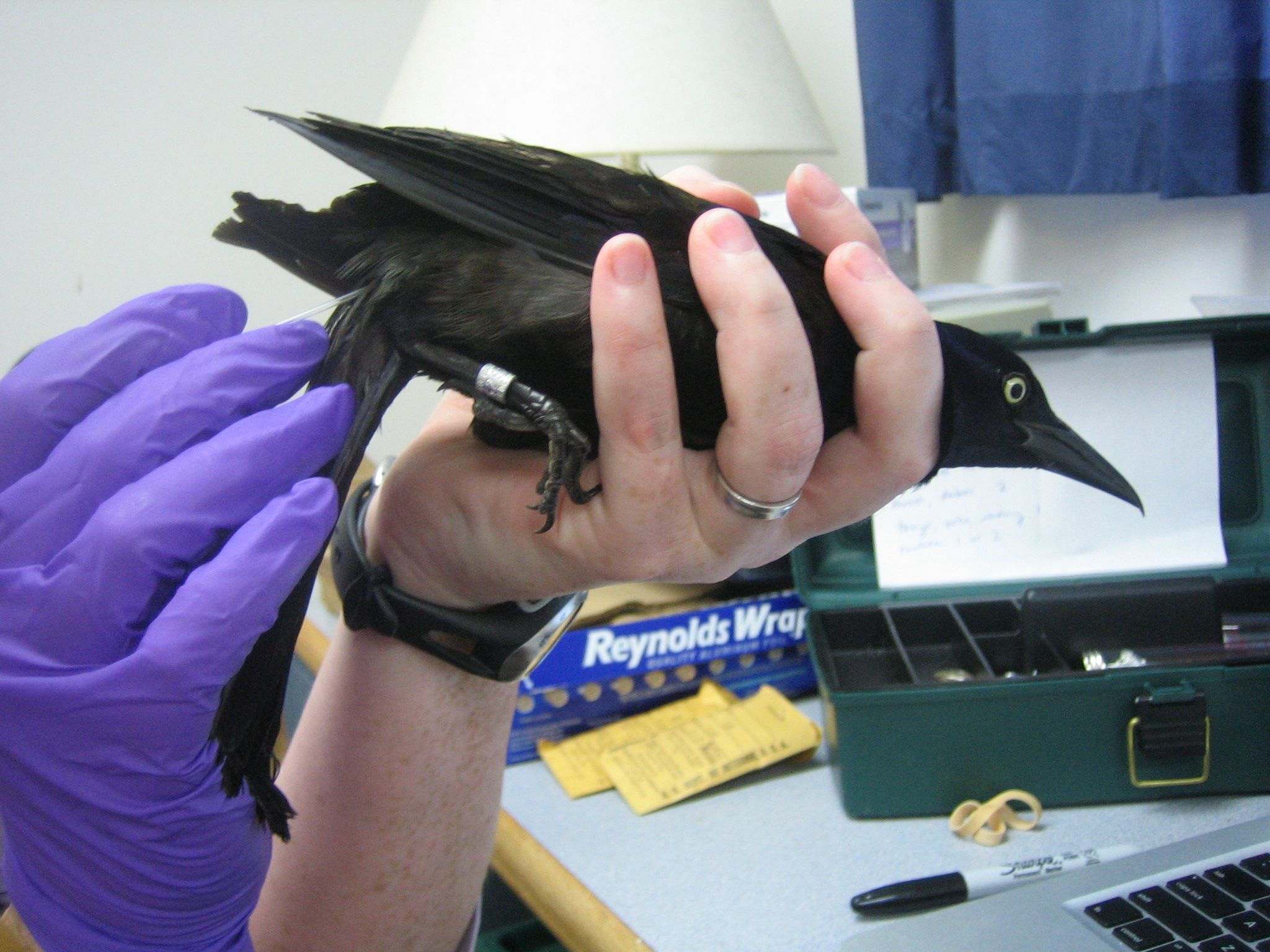
For a complete list of publications, see the CV page.
Whittaker, D. J., J. C. Hagelin. 2020. Female-based patterns and social function in avian chemical communication. Journal of Chemical Ecology. DOI 10.1007/s10886-020-01230-1
Abstract: Much of the growing interest in avian chemical signals has focused on the role of kin recognition or mate attraction, often with an emphasis on males, with uropygial gland secretions perhaps providing information about an individual’s identity and quality. Yet, data collected to date suggest sexual dimorphism in uropygial glands and secretions are often emphasized in female, rather than in male birds. That is, when a sexual difference occurs (often during the breeding season only), it is the female that typically exhibits one of three patterns: (1) a larger uropygial gland, (2) a greater abundance of volatile or semi-volatile preen oil compounds and/or (3) greater diversity of preen oil compounds or associated microbes. These patterns fit a majority of birds studied to date (23 of 30 chemically dimorphic species exhibit a female emphasis). Multiple species that do not fit are confounded by a lack of data for seasonal effects or proper quantitative measures of chemical compounds. We propose several social functions for these secretions in female-based patterns, similar to those reported in mammals, but which are largely unstudied in birds. These include: (1) intersexual advertisement of female receptivity or quality, including priming effects on male physiology, (2) intrasexual competition, including scent marking and reproductive suppression or (3) parental behaviors, such as parent-offspring recognition and chemical protection of eggs and nestlings. Revisiting the gaps of chemical studies to quantify the existence of female social chemosignals and any fitness benefit(s) during breeding are potentially fruitful but overlooked areas of future research.
Whittaker, D. J., S. P. Slowinski, O. Alian, J. M. Greenberg, A. D. Winters, M. M. Ahmad, M. J. E. Burrell, H. A. Soini, M. V. Novotny, E. D. Ketterson, and K. R. Theis. 2019. Experimental evidence that symbiotic bacteria produce chemical cues in a songbird. Journal of Experimental Biology jeb.202978. DOI 10.1242/jeb.202978
Abstract: Symbiotic microbes that inhabit animal scent glands can produce volatile compounds used as chemical signals by the host animal. Though several studies have demonstrated correlations between scent gland bacterial community structure and host animal odour profiles, none have systematically demonstrated a causal relationship. In birds, volatile compounds in preen oil secreted by the uropygial gland serve as chemical cues and signals. Here, we tested whether manipulating the uropygial gland microbial community affects chemical profiles in the dark-eyed junco (Junco hyemalis). We found an effect of antibiotic treatment targeting the uropygial gland on both bacterial and volatile profiles. In a second experiment, we cultured bacteria from junco preen oil, and found that all of the cultivars produced at least one volatile compound common in junco preen oil, and that most cultivars produced multiple preen oil volatiles. In both experiments, we identified experimentally generated patterns in specific volatile compounds previously shown to predict junco reproductive success. Together, our data provide experimental support for the hypothesis that symbiotic bacteria produce behaviourally relevant volatile compounds within avian chemical cues and signals.
Whittaker, D. J., M. Kuzel, M. Burrell, H. A. Soini, M. V. Novotny, and E. H. DuVal. 2019. Chemical profiles communicate heterozygosity and seasonality in a tropical lekking passerine bird. Animal Behaviour 151: 67-75.
Highlights: We tested whether chemical profiles reflected traits of lance-tailed manakins. Male preen oil profiles correlated with heterozygosity, a target of mate choice. Volatiles were unrelated to male age or social status. Volatile compounds changed with sampling date in both sexes. Females may assess male genetic diversity through chemical profiles.
Whittaker, D. J., N. M. Gerlach, S. P. Slowinski, K. P. Corcoran, A. D. Winters, H. A. Soini, M. V. Novotny, E. D. Ketterson, and K. R. Theis. 2016. Social environment has a primary influence on the microbial and odor profiles of a chemically signaling songbird. Frontiers in Ecology and Evolution 4:90.
We investigated the relative contributions of shared environments and genetic relatedness in shaping juncos’ symbiotic bacterial communities, and tested whether these communities underlie juncos’ chemical signaling behavior. To address these questions, we sampled parents and nestlings at 9 nests during one breeding season. Mated adult pairs showed high bacterial similarity, and offspring were more similar to their mothers than fathers. When comparing offspring to their social fathers, paternity did not influence bacterial profiles; full siblings were not more similar than half siblings. Our data suggest that social environment is a primary driver of individual microbiota and odor profile structure among juncos: birds who are in close proximity and in frequent contact develop similar profiles.
Whittaker, D. J. and K. R. Theis. 2016. Bacterial communities associated with junco preen glands: ramifications for chemical signaling. In Chemical Signals in Vertebrates 13, eds. Bruce A. Schulte, Thomas E. Goodwin, and Michael H. Ferkin. New York: Springer International Publishing, pp. 105-117. (peer-reviewed book chapter)
We conducted a preliminary bacterial survey of the preen gland microbiome in free-living juncos. We found that, much like mammalian scent glands, the preen gland harbors diverse communities of symbiotic odor-producing bacteria. Two of the most common genera in junco preen glands, Burkholderia and Pseudomonas, are capable of producing over half of the volatile compounds present in junco preen oil, making these bacteria a candidate mechanism for odor production in juncos.
Whittaker, D. J. and N. M. Gerlach. 2016. Mate choice in dark-eyed juncos using visual, acoustic, and chemical cues. In Snowbird: Integrative Biology and Evolutionary Diversity in the Junco, eds. E. D. Ketterson and J. W. Atwell. Chicago: University of Chicago Press, pp. 281-309. (peer-reviewed book chapter)
This book chapter appeared in a book that was one of the results of Ellen Ketterson’s NSF OPUS grant. We reviewed junco preferences for visual, acoustic, and chemical traits in the context of mate choice. A large section of the chapter is devoted to reviewing the relatively recent literature on avian chemical signaling, focusing especially on our work in juncos. We ended by discussing the limits of what we can learn from typical mate-choice studies.
Whittaker, D. J., D. G. Reichard, M. Drouilly, K. Battle, and C. Ziegenfus. 2015. Avian olfactory displays: A new hypothesis for the function of bill-wiping in a social context. Behavioral Ecology and Sociobiology 69: 159-167.
We suggest that bill-wiping in social contexts – previously dismissed as a “displacement activity” – may function as an olfactory display that releases odor from preen oil dried on the bill and increases attractiveness, similar to self-grooming in mammals. In a field study, we presented resident male juncos with either a male or female intruder paired with vocalization playbacks to simulate either a same-sex territorial intruder, or a potential mate. We found that bill-wiping appeared to be an integral part of courtship, especially in younger males, but not of aggressive behavior. We also tested whether friction increased the attractiveness of dried preen oil in a captive Y-maze study, but the results were inconclusive.
Whittaker, D. J., N. M. Gerlach, H. A. Soini, M. V. Novotny, and E. D. Ketterson. 2013. Bird odour predicts reproductive success. Animal Behaviour 86(4): 697-703.
We measured preen oil volatile compounds in free-living adult juncos at the beginning of the breeding season, and tested their relationship with individual genetic reproductive success in that season. We found strong sex-specific relationships between reproductive success and sexually dimorphic volatile compounds, such that females with a more “female-like” odor and males with a more “male-like” odor had more offspring. Male odor was also correlated with survival of offspring in their home nest, as well as the number of extra-pair offspring in their nest. We conclude that preen oil volatile compounds may serve as reliable mate assessment cues in songbirds.



